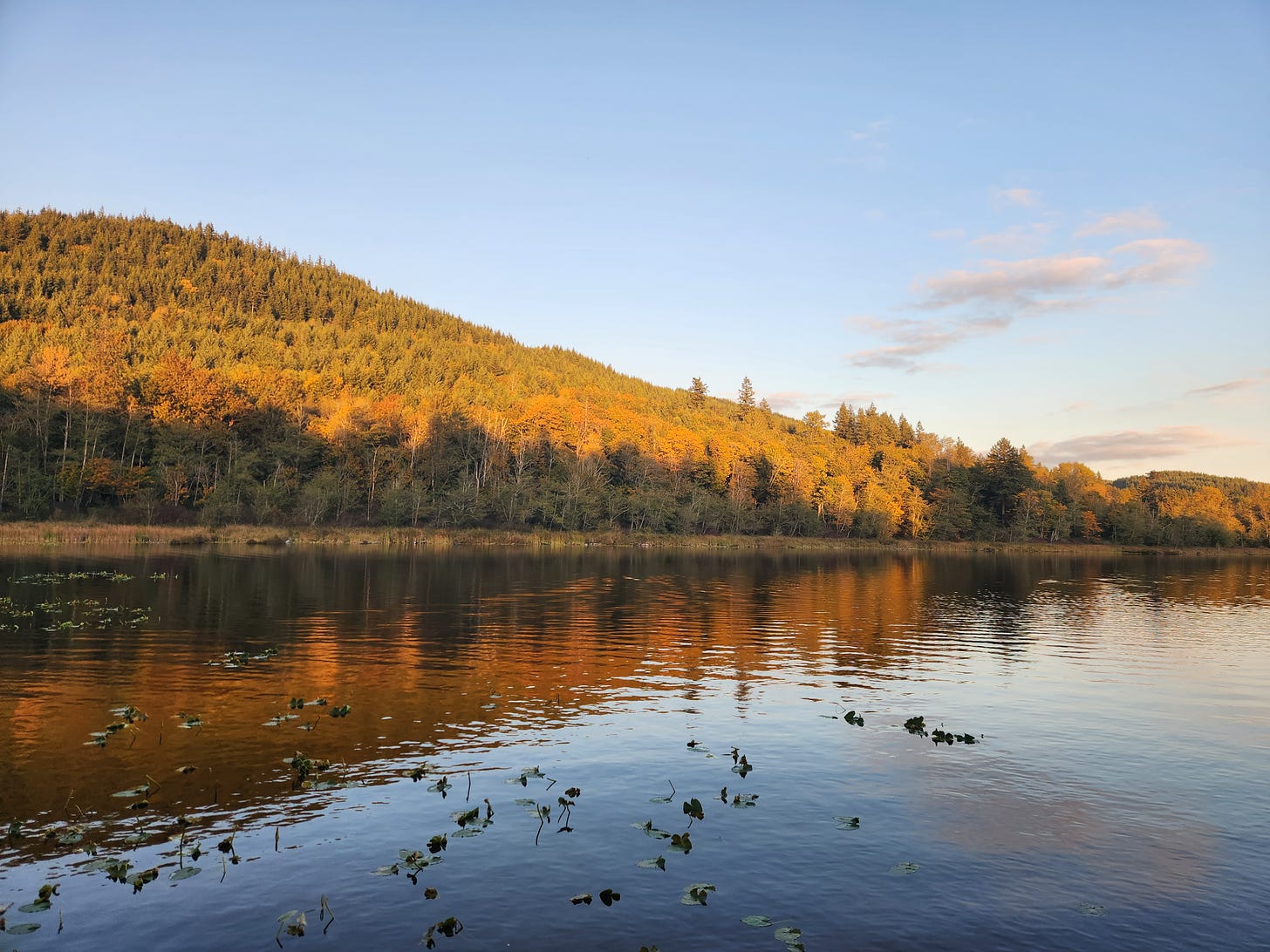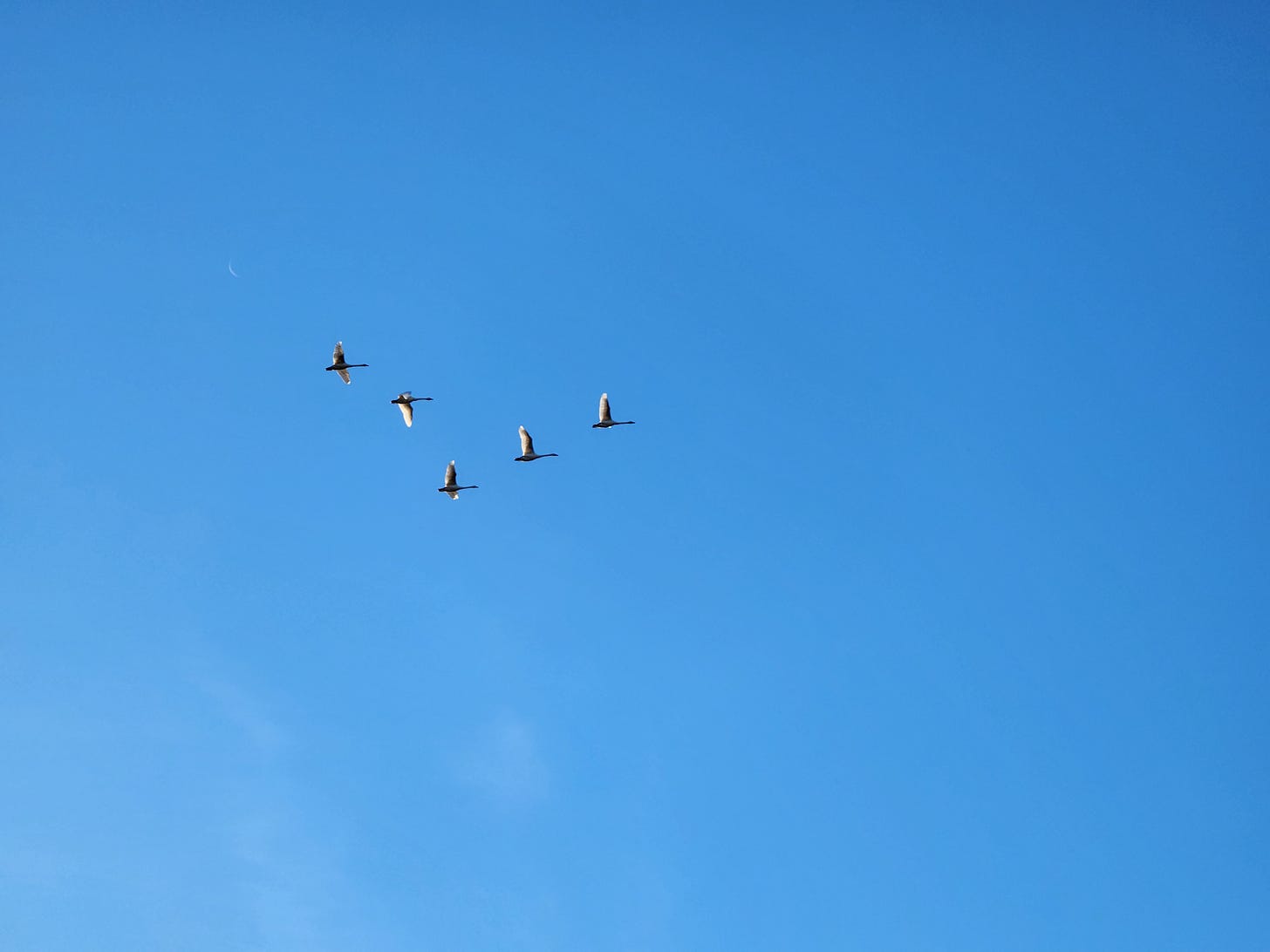Autumn has unquestionably arrived. At the moment I’m writing, the rain obscures my normal view of Skagit Bay and Whidbey Island. But the trees that sometimes block my sightline are losing their leaves fast, promising an unobstructed winter view of fields I can’t see after April. Migrating snow geese have returned to Skagit Valley. This is my favorite time of year, and I’m noticing more things.
Change prompts our attention, I think, because the newness plucks our perception. So for this week, for The Wild Card, I’m granting myself permission to muse a bit more than normal about the virtues of trying new things. Read on!
Beginner’s Mind
Shunryu Suzuki, one of the teachers most responsible for bringing Zen Buddhism to the United States, famously said, “In the beginner’s mind there are many possibilities; in the expert’s mind there are few.” The sentiment means specific things for Zen practice, but the principle applies broadly.
Experts benefit and suffer from too much knowledge and experience. It shapes, even distorts, how they see the world. After studying or doing the same thing for 10,000 hours or more, you might obtain expertise, but you also possibly develop tunnel vision.1 Consciously developing a “beginner’s mind” can keep things fresh. So can trying new things.
Seeing Anew
I moved to Skagit Valley almost two years ago, and the abundant winter bird life surprised and astounded me. (An essay I wrote about that will soon appear, and I’ll share here when it is published.) The birds help me pay more attention. I notice seasonal changes that bring different birds to the feeders at our house and in the woods, lake, and shore nearby. Noticing birds means I notice other things too—sounds, conditions of light, changes in foliage, bird-to-bird squabbles. I’m no birder by any definition a true birder would recognize, but my life has been enriched by noting the many possibilities.
Changing our circumstances can force us to try new things, but ruts are comforting, familiar. It takes effort to return to the same park or the same trail two dozen times and see new things. One of my favorite places to walk (to experience birds) near me is under a massive construction project this year, forcing me to discover new places, even just a few miles away. Twice this summer, I took this new walk—not even five miles away—and experienced the shore in dramatically different ways. What’s more, once I was there for high tide and once at low tide, and the place felt entirely different. Birds and wildflowers and terrain, though similar, appeared fresh.
Similarly, my spouse is currently learning a new art form. An initial step requires gathering small pieces of nature that capture her eye—leaves, pine cones, hulls. This means our walks slow down and her attention (and sometimes mine) is redirected. The path through the woods we take every day offers surprises now. As a source of art, the familiar route becomes new.
Two weeks ago, I quoted John Burroughs’ “The Art of Seeing Things” and do so again:
To the scientist Nature is a storehouse of facts, laws, processes; to the artist she is a storehouse of pictures; to the poet she is a storehouse of images, fancies, a source of inspiration; to the moralist she is a storehouse of precepts and parables; to all she may be a source of knowledge and joy.
One lesson I take from Burroughs here is that we can fix our eyes on the same object but from a different position and see things new–with beginner’s mind.
Not only can we, but we should.

This Newsletter
I’ve learned and been inspired by the interviews I’ve done and shared with paid subscribers. Their insights are relevant here. In the first, with Sarah Walls, this photographer admonished us all to “always take the side roads” where something new and unexpected will greet you.
Yet, I think it is possible that if we encounter something too new, too unexpected, we might be unprepared and unable to assimilate it into our experiences. In the second interview, posted over the weekend, David B. Williams talked about how serendipity drives much of his writing. But he qualified that, saying it was serendipity from paying attention. I’m guessing this qualification, in part, is guided by areas of interest. I pay attention to the natural and historical world, so if I’m paying attention, I will encounter many serendipitous connections. However, if I walked into a conversation about high finance conducted in Greek, serendipity will elude me!
On the one hand, Taking Bearings is old hat for me. I’ve been writing and teaching about nature and history for 25 years (yikes!), and I’m now about 15 months into this weekly routine. On the other hand, the audience is different, and rarely does a week go by where I am recycling old material. Typically, I’m reporting something new to me; it helps me not go stale (I hope!); it helps me notice new things.
Am I asking too much to think Taking Bearings helps you occasionally see something anew, too?
Closing Words
Seeing landscapes in fresh ways is the focus of much of my creative work. This essay is one of my favorites about that theme. This old newsletter connects to similar themes as well.
As always, you can find my books, and books where some of my work is included, at my Bookshop affiliate page (where, if you order, I get a small benefit).
Taking Bearings Next Week
The Classroom comes around next week, and I’m prepared to “celebrate” a 75th anniversary of a major environmental calamity. Stay tuned!
Malcolm Gladwell made famous the idea that mastery requires 10,000 hours of good practice. It turns out that it’s more complicated than that. See: https://www.bbc.com/future/article/20121114-gladwells-10000-hour-rule-myth.




